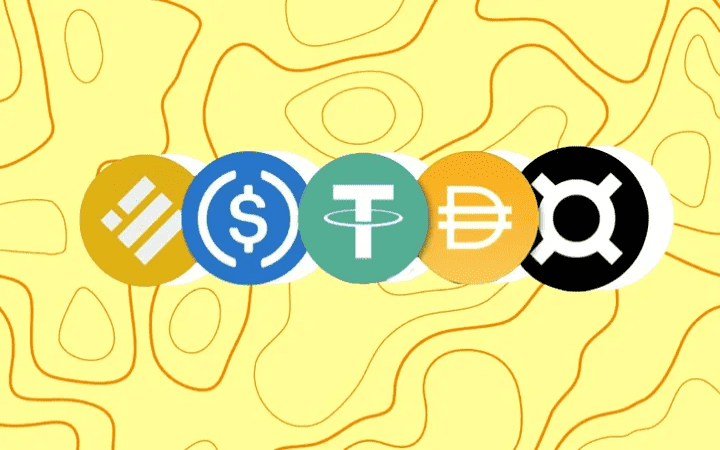BLOG


Grow Crypto Assets and Income by Staking: A Guide for New Investors
Today’s Key Takeaways
1. Choose the right projects
2. Get familiar with staking requirements
3. Pick the right staking method
4. Choose your validators
5. Diversify your portfolio
As you navigate the exciting world of cryptocurrencies, you might wonder how to make the most of your investments. Enter staking: a powerful strategy to generate passive income.
Many new crypto investors ask, Should I Stake My Tokens?
So, we will explore the risks and benefits of staking your crypto tokens and why it could be a great way to build wealth over time.
What is staking?
Staking is the process of participating in the Proof-of-Stake (PoS) consensus mechanism. You stake your tokens with a validator.
The validator verifies on-chain transactions and is paid tokens as a reward.
Those block rewards then get distributed to delegators, who have staked their tokens with validators.
Staking yield comes from block rewards and transaction fees collected by validators. Think of it as putting your idle crypto to work while you sit back and accumulate more tokens.
Why stake your crypto tokens?
1. Passive income: The most compelling reason to stake your tokens is to earn passive income. Claiming staking rewards and then restaking them compounds your investment over time.
2. Low barrier to entry: Unlike mining, which requires expensive hardware, technical expertise and high energy costs, staking only requires a compatible wallet. The validators run the computers that produce blocks and verify transactions, so you don’t have to.
Validators make staking accessible to investors looking to generate income and extra return, without the hassle of running their own nodes.
3. Support your favorite projects: By staking your tokens, you are actively participating in the consensus process and contributing to the blockchain’s stability, security, and growth. You are directly playing a role in their long-term success.
If you care about the protocol and community, staking your tokens is a simple way to get involved.
4. Influence governance: You get to vote on network proposals too, which means you get a say in the project’s future. If you don’t have the time or desire to vote, no problem. Staking your tokens gives your validator voting power and allows them to vote for you.
5. Inflation hedge: Most networks have built-in inflationary models, which means the total token supply increases over time. Those newly issued tokens are paid to delegators as staking rewards. Staking helps offset the dilution on your token holdings, preserving your purchasing power.
The passive income earned from staking your tokens depends on several factors, including the specific blockchain, network activity, the number of tokens you stake, the stated inflation rate, performance of your validator, and the commission charged by your validator.
It is important to note that in the United States, staking rewards get taxed like stock dividends. You will owe income tax at the end of the year, so keep track of your staking income using a spreadsheet or crypto accounting program.
We like cryptoheap to keep track of your crypto and generate reports for taxes. It’s simple and free to use until you generate a report to file with your income taxes.
How to estimate your potential passive income from staking
1. Staking yield: The yield is expressed as an annual percentage rate (APR). Staking yield fluctuates based on a few factors, which we will discuss below.
2. Number of tokens: Your rewards will be proportional to the number of tokens you have staked. The more tokens you stake, the higher your potential passive income.
3. Token price: The value of your staking rewards will depend on the market price of the underlying cryptocurrency. If the token price increases over time, your passive income will be worth more in terms of USD or other fiat currencies. Conversely, if the token’s price decreases, the value of your rewards will be lower.
4. Validator performance: The performance of the validator can impact your passive income. Stake with a validator with at least 98% uptime and check out our article, How To Choose a Validator.
5. Validator commission: It costs time and money to run validator nodes. Before switching data centers we were paying AWS $1200/month to run our Polygon MATIC validator. We must charge commission to cover our costs.
DO NOT STAKE YOUR TOKENS WITH 0% COMMISSION VALIDATORS.
Not all 0% commission validators are crooks, but 0% commission is usually the bait that dishonest node operators use.
Ask yourself, “Why would a stranger on the internet offer me something for nothing?” Take pride in supporting your validator and paying at least 1% commission. 10% commission is the average across all blockchains.
Additionally, 0% commission nodes collect delegations quickly, because most don’t realize the risks. Huge nodes are a threat to network security. If you care about the market price of the tokens in your wallet, you should care about network security.
To estimate your potential passive income from staking, you can use the following simplified formula:
Passive Income = (Number of Tokens Staked) x (Staking Yield) x (Token Price)
Many staking calculators are available online for specific blockchain networks, which can provide a more accurate estimate of your potential passive income.
The MATIC staking calculator is a good example. These calculators usually consider network-specific parameters and allow you to input your own staking amount and other variables to give you a tailored projection.
Building wealth through staking
To build wealth through staking, consider the following steps:
Choose the right project: Research various PoS blockchain projects and invest in those with solid fundamentals, strong development teams, and long-term potential. Check out the top 50 largest crypto projects by market cap, and start there.
Conclusion
Staking does offer crypto investors an accessible way to generate passive income and accumulate assets over time.
By carefully selecting projects, understanding staking requirements and diversifying your assets, you can grow your crypto holdings by supporting the projects you believe in.
